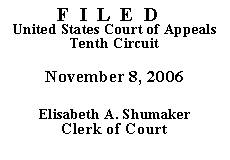

| UNITED STATES OF AMERICA, |
|
| v. | |
| RICARDO SEGOVIA-TORRES, |
I. BACKGROUND
On October 13, 2004, a Border Patrol agent arrested Mr. Segovia-Torres, a citizen of Mexico, near Lordsburg, New Mexico. He had been previously deported from the United States on July 21, 2000. Before that deportation he had been convicted of a drug-trafficking crime in California for which he had served more than 13 months in prison.
Section 2L1.2 of the United States Sentencing Guidelines (USSG) provides a base offense level of eight for the crime of illegal reentry after deportation, and a 16-level enhancement if "the defendant previously was deported . . . after . . . a conviction for a felony that is . . . a drug trafficking offense for which the sentence imposed exceeded 13 months." USSG § 2L1.2(b)(1)(A). Because Mr. Segovia-Torres had a criminal-history category of III, the Guidelines sentencing range was 63-78 months. The district court, treating the Guidelines as advisory, sentenced Mr. Segovia-Torres to 63 months in prison.
II. DISCUSSION
A. Standard of Review
Mr. Segovia-Torres first challenges the reasonableness of his sentence. See United States v. Booker, 543 U.S. 220, 261 (2005) (requiring review of sentences for unreasonableness). "[A] sentence that is properly calculated under the Guidelines is entitled to a rebuttable presumption of reasonableness. This is a deferential standard that the defendant or the government may rebut by demonstrating that the sentence is unreasonable when viewed against the other factors delineated in § 3553(a)." See United States v. Kristl, 437 F.3d 1050, 1054 (10th Cir. 2006). We review the district court's "factual findings for clear error and legal determinations de novo." Id.
Mr. Segovia-Torres also argues that the district court violated his Fifth Amendment due-process rights when it relied on findings made under the preponderance-of-the-evidence standard. We review such claims de novo. See United States v. Walters, 269 F.3d 1207, 1215 (10th Cir. 2001).
B. Reasonableness of Sentence
Mr. Segovia-Torres contends that his sentence was unreasonably harsh for several reasons: (1) the district court failed to perform the individualized analysis required by 18 U.S.C. § 3553; (2) his crime was victimless and was merely a regulatory offense; (3) the sentence was unnecessarily long as a means of deterring future criminal behavior; (4) the government presented no evidence that he had engaged in any illegal activity in the six years between his drug offense and his most recent reentry into the country; (5) a long sentence does nothing to protect the public from his future crimes, because he will be deported upon the completion of his sentence; and (6) he needs significantly less than 63 months for rehabilitation.
As for Mr. Segovia-Torres's first argument, the district court explicitly stated that it had "considered each of the sentencing factors set forth in Section 3553(a)." R. Vol. VIII at 8. And his other arguments do not distinguish him from the typical person convicted of his offense. In light of the presumption of reasonableness afforded sentences within the Guidelines range, we affirm the district court's sentence.
C. Due Process
Mr. Segovia-Torres argues that the district court violated his Fifth Amendment due-process rights by "rel[ying] on facts under a preponderance of the evidence standard." Aplt. Br. at 8. Further, although he acknowledges that the district court stated that it was considering the Guidelines to be advisory, he contends that there must be some "meaningful difference" between the resulting sentence as it was imposed and how it would have been determined before Booker. Id. at 24.
We reject these arguments. As Mr. Segovia-Torres concedes, under the post-Booker regime of advisory Guidelines, courts may make fact determinations for sentencing under the preponderance-of-the-evidence standard. And our holding in Kristl, 437 F.3d at 1054, that Guidelines sentences are presumptively reasonable is inconsistent with his contention that a post-Booker sentence must vary somewhat from the Guidelines range.
III. CONCLUSION
We AFFIRM the judgment of the district court. We DENY Mr. Segovia-Torres's motion to appoint new counsel or permit filing of a supplemental pro-se brief.
ENTERED FOR THE COURT
Harris L Hartz
Circuit Judge
*.After examining the briefs and appellate record, this panel has determined unanimously to honor the parties' request for a decision on the briefs without oral argument. See Fed. R. App. P. 34(f); 10th Cir. R. 34.1(G). The case is therefore ordered submitted without oral argument. This order and judgment is not binding precedent, except under the doctrines of law of the case, res judicata, and collateral estoppel. The court generally disfavors the citation of orders and judgments; nevertheless, an order and judgment may be cited under the terms and conditions of 10th Cir. R. 36.3.